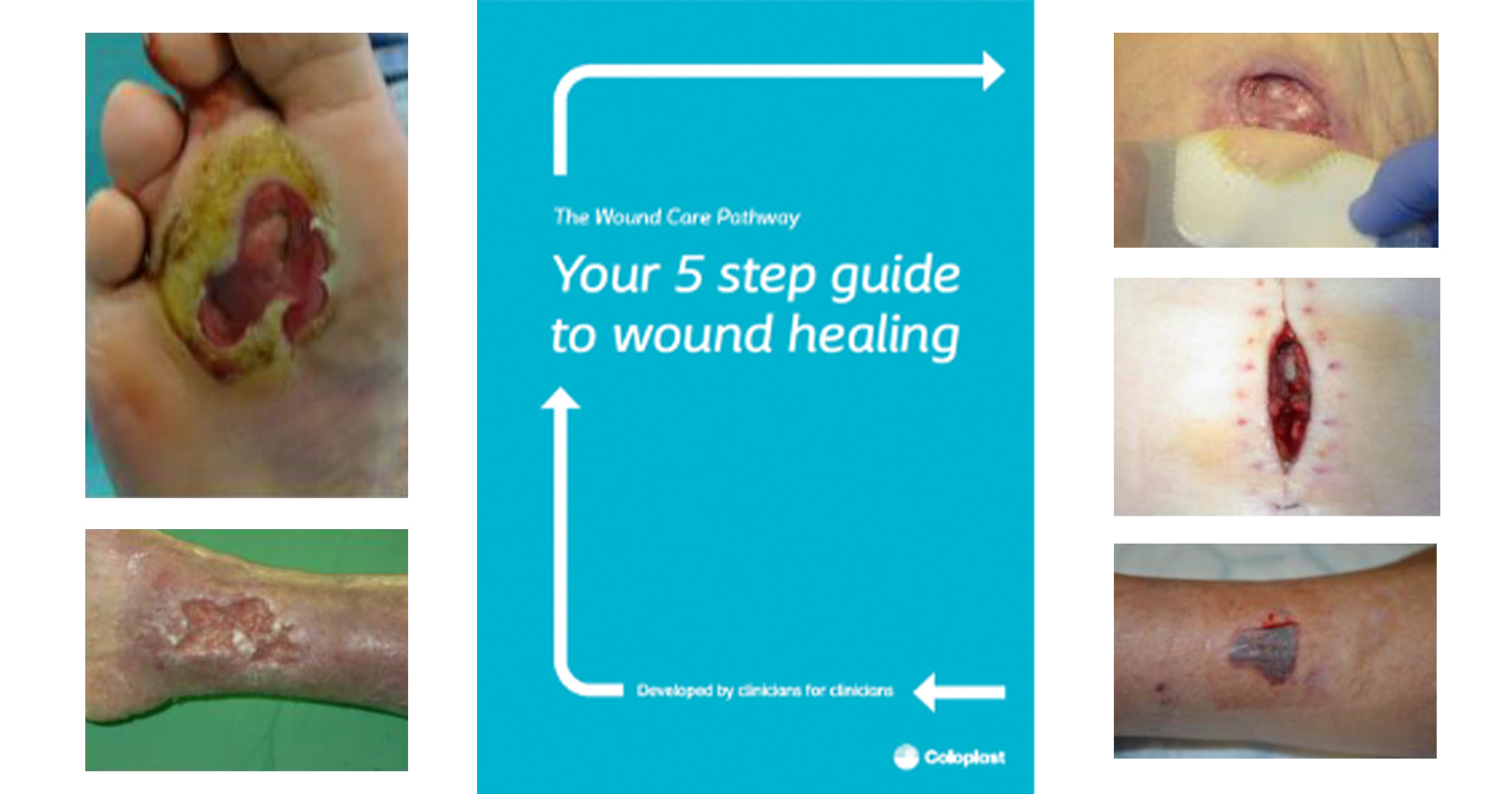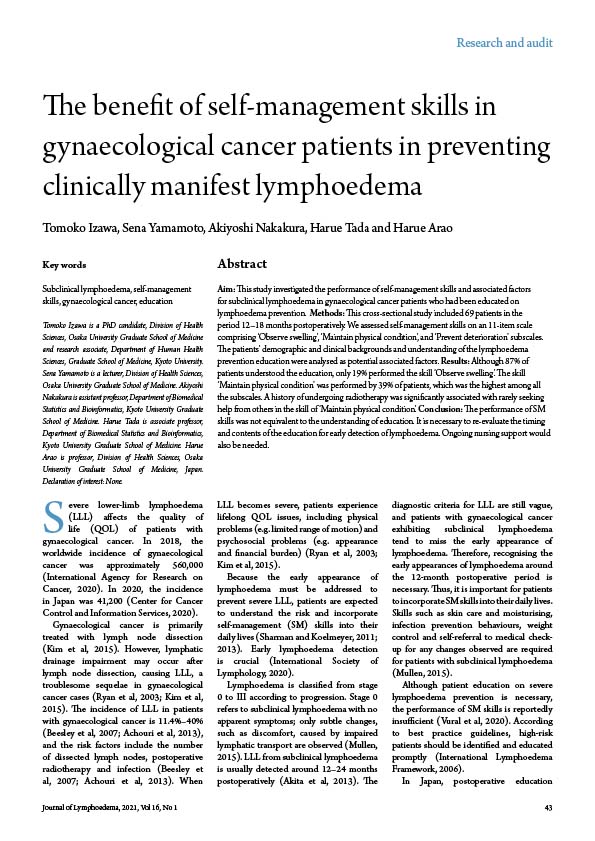Artificial intelligence (AI) is quickly becoming integrated throughout various domains, including healthcare. In particular, wound care has been experiencing rapid growth in the integration of AI-based technologies. A recent systematic review on image-based artificial intelligence found over 250 articles on wound assessment, measurement, and diagnosis (Anisuzzaman et al, 2022).
While computer vision technologies are becoming more ingrained in clinical practice, there remain many opportunities to utilise other aspects of AI within the wound care specialty.
An often overlooked aspect of the wound specialisation which may benefit from the integration of AI is education. Proper wound care education is essential for healthcare providers to ensure that they can effectively manage wounds and promote healing. AI may assist in enhancing wound care education through provision of real-time feedback, personalised learning, and optimising teaching methods (Lee, 2023).
Recently AI technologies called large language models (LLM), such as ChatGPT from OpenAI, have revolutionised how individuals can interact with data. These deep learning algorithms are able to summarise, translate, predict, and create text and other content, based on immense datasets (Sallam, 2023).
The integration of human intelligence and AI has been identified as a way to standardise and increase specialisation of wound management (Queen and Harding, 2019). Queen and Harding (2019) noted the potential of AI to assist with education and awareness of wound care as well as improve workflow of clinicians and engage more patients in their care.
In this article, I will explore the use of AI in wound care education and its potential benefits and current limitations.
State of AI in healthcare
Modern AI has been developing for decades, starting its evolution in the 1980s, during a similar time as the development of advanced wound dressings (Queen, 2019). In addition to improving diagnosis and clinical decision making, AI has been discussed as possibly benefiting personalised medicine, drug discovery, and the analysis of large datasets (Sallam, 2023).
Seibert et al. (2021) performed a rapid review on the application of AI in nursing and identified prominent approaches relevant to healthcare, including machine learning, expert systems and hybrid models.
Expert systems assist clinicians with decision-making and complex problem solving through algorithms based on rule-based reasoning and a specific knowledge base (Seibert et al, 2021). In contrast, machine learning identifies patterns in data and uses them for task analysis, such as diagnosis and classification, while hybrid systems combine these two forms of AI (Seibert et al, 2021). Seibert et al. (2021) found that only 11.6% of studies focused on an “expert system” AI model, and only 1.7% on hybrid models, while a large majority of studies focused on machine learning.
In a systematic review, Dweekat et al (2023) outlined some of the endless applications of AI in wound management specific to pressure injury management. Current tools are using machine learning with singular or multiple inputs, such as images and healthcare data including pressure injury risk scale score and risk factors, to categorise if a pressure injury will develop, pressure injury stages, tissue types, healthcare acquired versus non-healthcare acquired pressure injuries, and if the wound is experiencing healing or if healing is delayed (Dweekat et al, 2023).
While traditional forms of AI, such as machine learning and computer vision, may provide important clinical decision-making data, new technologies, such as LLMs, can assist with communicating and educating clinicians and their patients. While similar to traditional expert system models, LLMs, such as ChatGPT which launched in November 2022, are trained on massive datasets in multiple languages. This, along with advanced neural network natural language processing, allow it to respond in a human-like way (Sallam, 2023). The advanced modelling due to training on large datasets allows ChatGPT to be vastly superior to its predecessors (Sallam, 2023).
This technology is progressing rapidly. In 2022, Google announced it had developed Med-PaLM, a LLM dedicated to medical LLM research which was already obtaining a passing score on US medical licensing questions (Matias and Corrado, 2023). Within just one year Med-PaLM 2 was announced, scoring 85% on medical exam questions, responding at an “expert” doctor level, improving responses by 18% from the previous year (Matias and Corrado, 2023).
Recently there have been a number of articles discussing the benefits of LLMs in healthcare including the benefits and limitations to healthcare education (Lee, 2023; Sallam, 2023; Scerri and Morin, 2023).
The recent public release of ChatGPT has spurred the imagination of individuals worldwide with the many possibilities of this new AI technology. Based on extensive training datasets, LLMs such as ChatGPT can provide insight into many topics and fields including wound care.
Table 1 demonstrates the response to the question “How can large language models such as ChatGPT improve wound care education?”. The ChatGPT LLM outlined four possible use cases for LLMs in the field of wound care education including personalised education, accessible information, provision of up-to-date information, and multilingual support.
Application of AI in wound care education
In 2019, Carroll noted that: “Emerging technologies, such as predictive analytics and machine learning, will strengthen our ability to collect data, assimilate these data into information, apply newly discovered knowledge, and gain wisdom to improve care delivery” (Carroll, 2019, p.17).
While healthcare literature has focused mostly on the use of AI in education as it relates to the implications of learning during classroom education, or regarding the need to understand AI and its implication for clinicians, there has been little devoted to the potential benefits of AI in knowledge integration and transformation within clinical practice. The Registered Nurses Association of Ontario (RNAO) produced a 2020 report called Nursing & Compassionate Care in The Age of Artificial Intelligence: Engaging the Emerging Future (RNAO and AMS Healthcare, 2020). This report identified multiple impacts of AI in nursing education, including on patients, on students and on nurses within the clinical practice setting. Many of these impacts also relate to wound care education. For example, it has been suggested that nurse educators in the future may use AI-powered chatbots to act as a virtual patient in testing nurses regarding their knowledge (RNAO and AMS Healthcare, 2020).
With the advancement of LLMs, the utilisation of vast amounts of data in education and learning is quickly becoming a reality. For example, ChatGPT can already pass reputable medical examinations such as the United States Medical Licensing Examination (Sallam, 2023). Sallam (2023) also identified how LLMs such as ChatGPT can be motivational in healthcare education as they provide personalised interaction leading to enhanced self-learning.
Lee (2023) noted that LLMs such as ChatGPT can act as a virtual teaching assistant providing real time personalised feedback. It is not difficult to see the potential applications of this technology for clinicians managing wounds. Those clinicians seeking to develop a broader knowledge in wound management may ask a virtual tutor questions about wound management, or seek insight on a case they may be uncertain about. Alternatively, as suggested by the RNAO and AMS Healthcare (2020), wound care specialised educators may choose to utilise LLMs as virtual patients. They could request the LLM act as a patient suffering from a specific wound type, allowing the learner to ask questions to the system until a diagnosis can be made. Utilisation such as this may develop clinician assessment skills and improve understanding of characteristics and pathophysiology of wound development and effects on healing.
Additionally, LLMs utilising a specialised body of knowledge may provide in the moment information and education for clinicians, such as requesting instructions for completing tasks. For example, a nurse who had not previously completed a wound packing could ask the LLM to provide a list of equipment and step by step instructions for packing a wound. The LLM could quickly search a large amount of data and summarise best practice recommendations to provide to the nurse in the moment and guide the dressing change. For example, hospitals may utilise a LLM to provide insight on clinical skills based on hospital policy, where the LLM will reference the policy or policies the response is based upon.
There are many benefits of LLMs for use within the classroom setting as well. LLMs allow for personalised education, explaining concepts at a level that is more easily understood by the student learner. Lee (2023) also notes how use of LLMs allow educators to refocus their time, spending less time on office hours and more time on other curricular aspects, such as wound management.
In addition to developing synthesised educational handouts, lesson plans and educational resources, LLMs may also develop items such as quizzes with answers and explanations (Lee, 2023). This may make accessible wound care education more readily available, reducing the strenuous preparation activities by the wound care specialist in developing educational services for learners such as workshops, webinars, and academic programmes.
Similarly, to student learners, LLMs can play a role in the education of those with wounds. The RNAO and AMS Healthcare (2020) noted that future nurses would be likely to utilise virtual healthcare assistant chatbots to assist patients with enhancing their self-management ability. This may be in the form of educating the individuals on the importance of completing certain tasks or guiding them through certain skills, such as the steps to completing a simple dressing change, or the signs of infection that the individual should be monitoring.
Scerri and Morin (2023) discussed how LLMs can improve communication between nurses and patients, providing conversational cues and creating instructions and recommendations that are summarised, easier to understand, and person centred. LLMs can also translate information and instructions into a patient’s native language (Scerri and Morrin, 2023).
Moving forward, the integration of multiple deep learning algorithms, not only LLMs but also the integration of LLMs with computer vision and other forms of AI may increase the utilisation of AI in wound care education. For example, in future iterations of LLM, models that utilise imagery, uploading wound images could categorise and diagnose the underlying wound cause as well as provide information and education regarding its description. Additionally, the LLM could provide a detailed overview of the diagnosis, and provide information regarding potential treatment options, such as the steps to complete wound dressings, or compression application for example, in the management of a lower leg ulcer. Furthermore, it could provide educational resources to provide to patients to assist with self-management of the wound.
Current limitations
Sallam (2023) noted multiple limitations of LLMs, ChatGPT specifically, arguably the most advanced LLM available within the healthcare environment. With the rate of advancements in this technology however, these limitations are quickly being addressed. Take for example concerns with regards to the training data set of large language models, or the inability of ChatGPT to handle images. Shortly after that paper was published, Microsoft’s Azure OpenAI service announced retrieval augmented generation (RAG), which allows for control over the knowledge base used by ChatGPT to respond to questions and formulate response content (Microsoft Mechanics, 2023). This content “overlay” allows specific private, and unique datasets to be the primary source of information in the LLM response, while still taking advantage of the LLM immense dataset which provides its natural language processing ability. Additionally in 2023, ChatGPT’s developer OpenAI launched GPT-4, a large multimodal model, which accepts both image and text inputs and provides a text output (OpenAI, 2023).
While the technology continues to develop at a rapid rate, multiple limitations remain that impact general integration into practice and as an educational tool. The primary concern is what has been termed “hallucinations”, or the provision of inaccurate or biased information that sounds correct (Lee, 2023; Sallam, 2023; Scerri and Morrin, 2023). It is important to note that LLMs are not knowledge bases, but rather deep learning models that predict responses based on the input data and the data upon which it has been trained (Lee, 2023). However, this does not mean the responses are guaranteed to be factually correct (Lee, 2023). There is also the concern regarding data privacy and inputting medical and patient data into the LLM (Sallam, 2023). Advancing technologies are attempting to address this issue through techniques such as the previously mentioned RAG, where private enterprise level data security is considered (Microsoft Mechanics, 2023). Further research and utilisation will be required in order to test new technologies and techniques such as RAG to validate them for the healthcare setting.
Lee (2023) noted that educators are concerned about the possibility that learners may become reliant on AI, not taking the time to develop critical thinking skills, and understanding the foundational knowledge required to provide evidence informed care. It has also been felt that this reliance on the use of chatbots in clinical decision-making may impact the patient trust and relationship with their healthcare provider (Scerri and Morin, 2023).
Furthermore, Sallam (2023) discusses how LLMs are only as effective as the data in which they are trained upon, and this may lead to outdated and incorrect responses. This will place a great need for those with specialised knowledge to develop training datasets for use with future AI technologies.
Conclusion
While AI continues to rapidly advance and affect many aspects of our lives, healthcare professionals should recognise the potential benefits and limitations of these tools. Within the wound care specialty, there are likely many potential areas which have been, or will be, impacted by AI. It is clear that AI technologies such as LLMs will have a great impact on wound care, including education. Multiple implications of LLMs and hybrid AI technologies have been outlined within this article which will affect wound care education from the perspective of clinicians, students and individuals living with and managing wounds. As specialists within our field, we must understand the impacts of this technology and be prepared for its integration into clinical practice and education, while recognising the current limitations and recognising the need for further validation and testing of future tools as they are developed. AI and LLM technologies are developing at an exponential rate and provide many opportunities to enhance and elevate wound care education.






